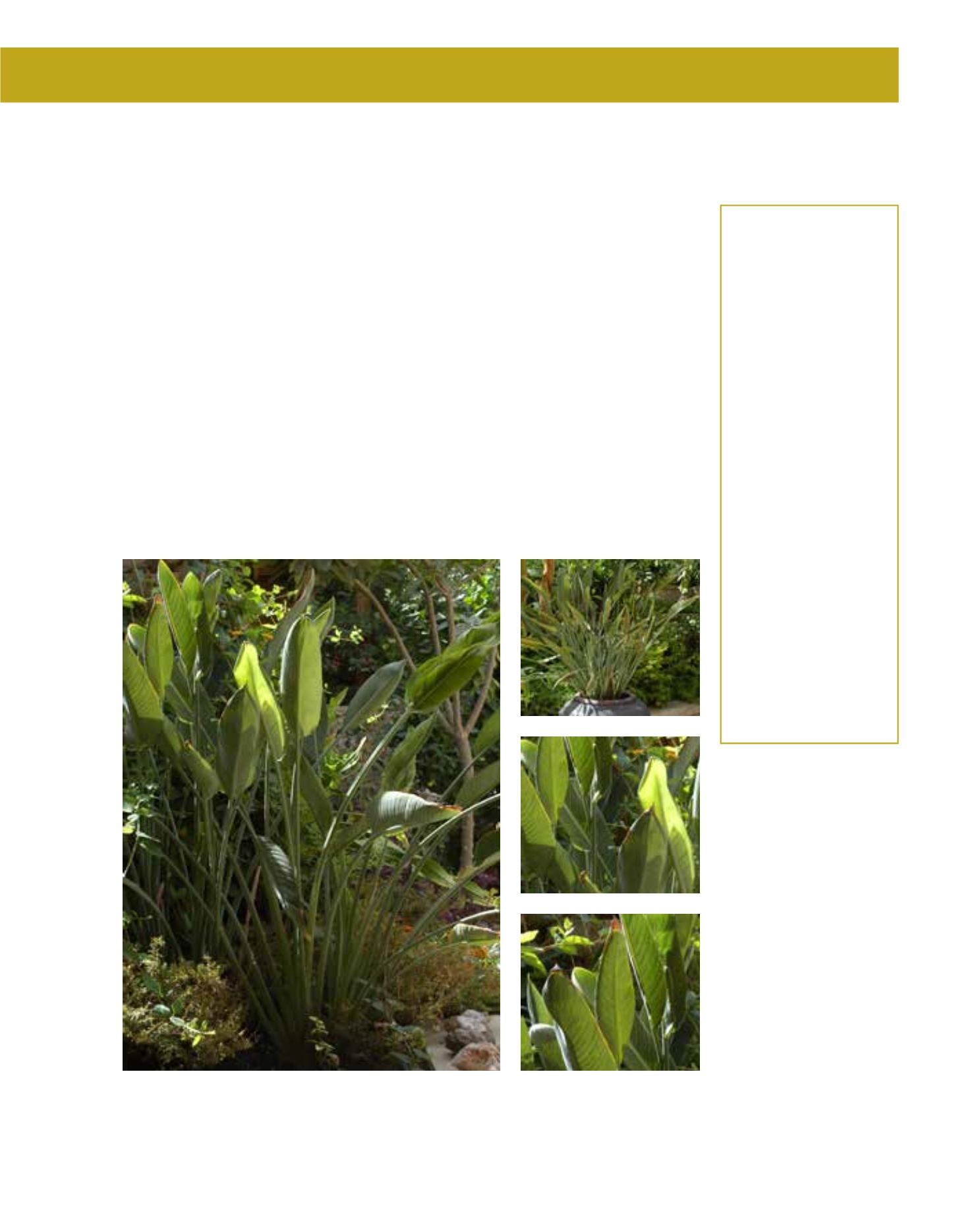

GENERAL
Origin
:
sub-tropical,
tropical
Vigour
:
fast growing
Humidity
:
semi-humid,
very humid, very
humid
Propagation :
sowing and
pricking out,
division
Maintenance :
moderate
CONDITIONS
Urban climate :
vulnerable
Dessication :
vulnerable
Stagnant water :
vulnerable
Irrigation
:
high
Salinity/ppm :
moderate (1800
ppm)
Hardiness
:
0°C
SHAPE
Type
:
perennial, shrub
Height
:
1 m-2 m
Spread
:
1.5 m-3 m
Foliage
:
evergreen
FLOWER
Colour
:
orange, blue
Size
:
15 cm
Period
:
April - November
FRUIT
Type of fruit :
capsule
Fruit size
:
4 cm
Throughout the world, the Bird of Paradise is known for its cut flowers. It is indigenous to the
Eastern Cape, South Africa, growing along rivers and close to the coast. Its stiff, upright leaves
form dense clumps. They emerge from the base without any branching, creating a bouquet of
exotic flowers on top of lush green foliage. The bush is about 1.5 metres high, but from autumn
to spring imposing flowers stand above the leaves. A horizontal spathe resembles a bird’s head.
Flowers are raised one by one from this sheath, consisting of three orange sepals and three dark-
blue petals each. Pollination is by birds. Strelitzias do not have many particular site requirements.
With frequent irrigation, the plants thrive in full sun, but also produce flowers in partial shade. A
rich soil with loam and compost is the most suitable, and occasional fertilising guarantees vital
growth of healthy leaves and flowers. Hailing from coastal regions, they tolerate some salinity in
the water applied, and withstand strong winds without damage. Low temperatures are tolerated
as long as there are no frosts. They make a strong accent in sheltered gardens in Arriyadh. Bird
of Paradise plants flourish in containers and look well as accent plants, either singly or grouped.
The spectacular flowers should be accessible to enable pedestrians to take a closer look. Sowing in
spring may result in flowering offspring within three to five years. Another method of propagati-
on is division in autumn, which is usually combined with transplanting mature clumps.
288
Strelitzia reginae,
Strelitziaceae
Bird of Paradise,
Strelitzia
















